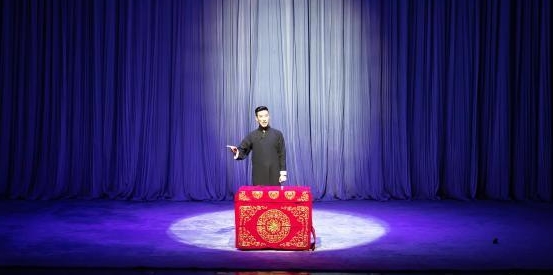
Tianjin Pingshu:One of the Funniest Folk Art Forms in China
The Gen'er Du (哏儿都)as a nickname for Tianjin really takes hold in the last century. Tianjin is known for its unique dialect and rich cultural heritage and one of the most celebrated forms of artistic expression there is storytelling, or Pingshu (评书), a traditional Chinese narrative art form. Although Pingshu has declined in popularity over the years, the memories of it remain vivid.

What Makes Tianjin Pingshu Unique?
Wang Wenyu (王文玉), a renowned figure in both Xiangsheng (相声) and Pingshu, highlights that Tianjin Pingshu is not merely a collection of jokes. While it is based on the Beijing accent, it has developed a distinct Tianjin flavor characterized by its quick pace, humor, and strong audience interaction. The performers often engage the crowd, using local dialects to enhance the storytelling experience.
One notable work is Hunhun Lun (混混儿论), also known as Gu Shang Ying Xiong Pu (沽上英雄谱), which depicts the lives of lower-class citizens in late Qing Dynasty Tianjin. This Pingshu showcases local customs and human experiences, using authentic Tianjin dialect and resonating with the common people. Despite its initial popularity, it faded from the stage after 1949.
The Golden Age of Pingshu in Tianjin
Pingshu originated in Beijing and found its way to Tianjin around the late Qing Dynasty (around 1840-1912 AD). The art form flourished in the 1920s and 1930s, with numerous tea houses and storytelling venues throughout the city. The vibrant cultural scene attracted a diverse audience, from wealthy merchants to labourers, all eager to hear captivating tales.
During this period, two influential works emerged: Yongzheng Jianxia Tu (雍正剑侠图) by Chang Jiemiao (常杰淼) and Sanxia Jian (三侠剑) by Zhang Jiexin (张杰鑫). These stories captivated audiences across Northern China and inspired countless performers.
Another significant figure is Chen Shihe (陈士和), who transformed the traditional storytelling of Strange Tales from a Chinese Studio (聊斋) by infusing it with rich narrative techniques. His performances were so engaging that they could last for months, captivating audiences throughout Tianjin. Chen's style laid the foundation for what became known as the Chen School of Pingshu.
The Technique of Shuan Kou'er (拴扣儿)
Wang Wenyu recalls that in the old times listening to a story once cost just one fen (分, currently 0.01 yuan of RMB), regardless of the storyteller’s fame. Each storytelling segment—typically around ten minutes—ends with a suspenseful hook, or Kou'er (扣儿), designed to keep the audience engaged. If the hook is effective, listeners will stay for the next segment, ensuring a steady audience for the performer.
The Chen School, founded by Chen Shihe (mentioned above) is known for its mastery of this technique, leaving audiences eager for more. Performers are skilled at creating suspense, knowing that a well-placed hook will draw listeners back for the continuation of the story.
Tianjin Pingshu is a vibrant part of Chinese cultural heritage, marked by its unique dialect, engaging storytelling techniques and rich history. While it may have faded from mainstream culture, the essence of Tianjin's storytelling tradition continues to resonate with those who appreciate its artistry.
Related articles
-
 Xiangsheng: the Laughter and Wisdom of Tianjiners
Xiangsheng: the Laughter and Wisdom of TianjinersMore
-
 Clay Sculpture Legacy: the Century-old Tradition
Clay Sculpture Legacy: the Century-old TraditionMore
-
 Tianjin Song Art Troupe: the Storytelling Accompanied with Rhythmic Drums
Tianjin Song Art Troupe: the Storytelling Accompanied with Rhythmic DrumsMore
-
 Echoes of Concession: The Cultural Legacy of Tianjin's Foreign Enclaves
Echoes of Concession: The Cultural Legacy of Tianjin's Foreign EnclavesMore
-
 Shidiao: the Opera that Brings Reputation to Tianjin as “City of Folk Arts”
Shidiao: the Opera that Brings Reputation to Tianjin as “City of Folk Arts”More